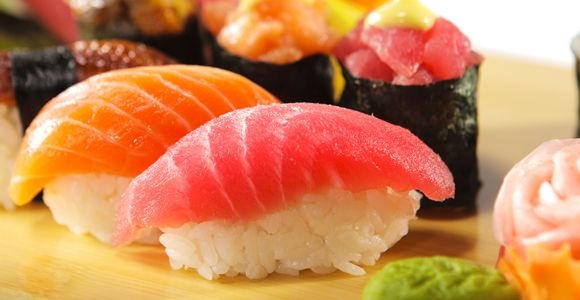The 4 Healthiest World Cuisines

We've all been therestaring at the seemingly empty refrigerator on a Thursday night, considering whether to scrape together a meal or go out to eat. For some, the idea of dining out means a night away from the diet as well. But many ethnic cuisines have healthy options the first step is to choose one of the following cuisines that have the healthiest staple foods.
1. Japanese
Japan has some of the world's oldest living people, so it stands to reason that they must be doing something right. Staple foods include greens like bok choy and seaweed, rice, and soy beans and soy products like tofu and miso paste. Fish is the protein of choice and is consumed more often than chicken or red meat like in Western societies, which means that the fat consumed is mostly unsaturated (heart-healthy) as opposed to the saturated fats found in beef and poultry. Sweets and desserts are not common, but those that are served are typically made from ingredients derived from rice or beans, like sticky rice cakes or rice flour dumplings filled with red bean paste.
Making it even healthier, the cooking methods widely used in Japan are stir frying or steaming, which use little to no fat and also don't deplete nutrients like boiling has been shown to. The drinks of choice are teas and occasionally, wine.
Going out for Japanese? Make it even healthier by choosing brown rice where possible in order to increase your fiber intake. Avoid tempura items, which are deep fried and loaded with excess fat. Keep in mind that it is easy to overdo the rice, so opt for some sashimi and edamame (soy beans) to get the most out of your take out meal.
2. Thai
Thai meals are loaded with fresh vegetables, herbs and spices. The majority of dishes are family-style curries or soups served with rice. Curries often contain fish, coconut milk, and numerous herbs and spices like chili, coriander, kaffir lime, turmeric, cilantro and cumin. Thailand has a low incidence of gastrointestinal cancers, most likely due to the high amount of spices used like ginger and lemongrass, which have been shown to have digestive benefits. Like in Japan, the main cooking methods are stir frying, grilling or steaming which help keep the fat content low. Thai meals are often finished with fresh fruit as opposed to dessert. Coconut milk is high in saturated fat, so the best options are soups, simple stir fries or Thai beef salad.
3. Greek
Greece is in the heart of the region in Europe known for the Mediterranean Diet, which has been shown to be protective against heart disease. The diet is high in unsaturated fats like olive oil and fish, and low in saturated fat containing foods like red meat and fried dishes. Staples in Greek cuisine include olives, nuts, seafood and goat cheese. Small amount of yogurt and lamb are also included, but many dishes revolve around vegetablesthink moussaka, stuffed grape leaves and hummus. Many of the sauces are tomato-based, and most salad dressings are simple olive oil and vinegar combinations.
4. Mexican
Traditional Mexican meals are based on beans and rice, tomatoes, and whole grain tortillas using corn. Mexican food is a great example of something that has been "Americanized" and therefore can often be an unhealthy choicethink Taco Bell. Instead of traditional beans and rice, we get cheese and sour cream-filled tacos. But going back to its traditional roots, Mexican food is very healthy. Most vegetable sources of protein are incomplete, which means that not all of the amino acids that we require from food sources are present. But putting beans and rice together form a complete protein, so it is a great option for vegetarians. Avoid lots of cheese and sour cream, which are saturated fats, and instead choose avocado or guacamole to increase your unsaturated fat intake.
Whether you decide to make something or dine out, these cuisines have the best options for fresh, nutritious dishes so you can maintain a healthy diet.
Article Source: http://www.fitday.com/fitness-articles/nutrition/the-4-healthiest-world-cuisines.html?utm_source=zergnet.com&utm_medium=referral&utm_campaign=zergnet_899315
Image Source: http://cimg3.ibsrv.net/cimg/www.fitday.com/693x350_100-1/23/03_HealthiestCuisines-108023.jpg
VOCABULARY WORDS:
1. Scrape together (idiom) ~ to accumulate or produce something with difficulty
2. Deplete (v.) ~ use up the supply or resources of
3. Intake (n.) ~ an amount of food, air, or another substance taken into the body
4. Opt (v.) ~ make a choice from a range of possibilities
5. Cuisine (n.) ~ a style or method of cooking, especially as characteristic of a particular country, region, or establishment
QUESTIONS FOR DISCUSSION:
1. Have you tried any of the cuisines mentioned above? If so, which one/s and how was it?
2. In your opinion, are Korean cuisines healthy? Explain your answer.
3. What is the healthiest Korean dish? How about the least healthy? Discuss your answer.